
Celebrating the Abundance of Local Foods in Southern Wisconsin



Celebrating the Abundance of Local Foods in Southern Wisconsin






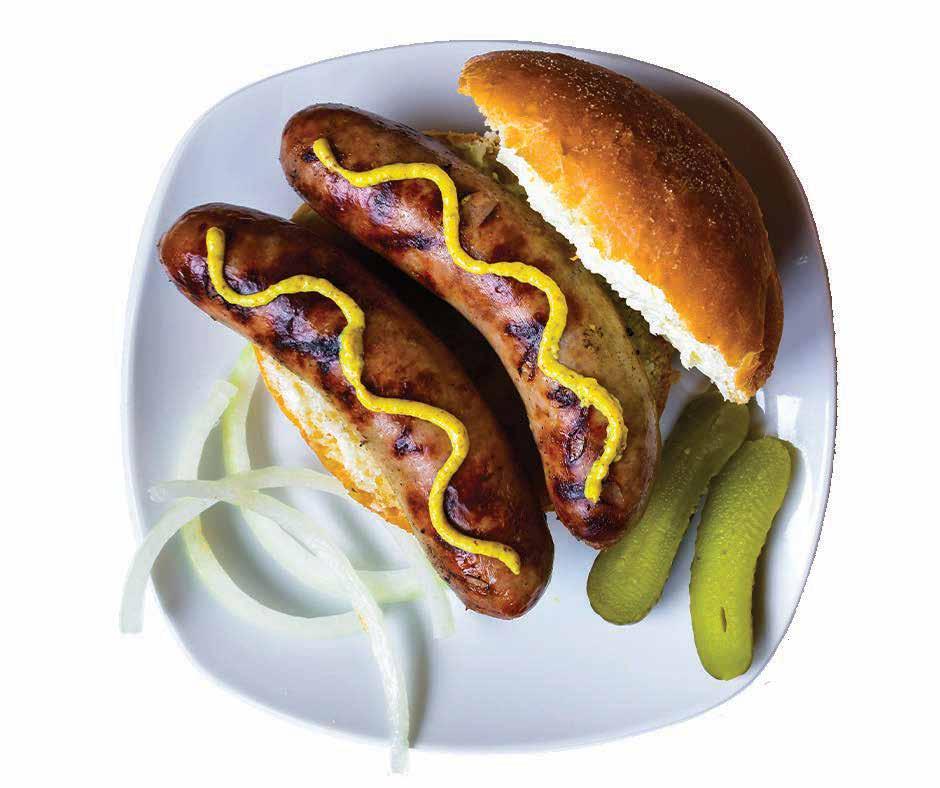





“Sometimes the most scenic roads in life are the detours you didn't mean to take.”
―ANGELA N. BLOUNT, ONCE UPON A ROAD TRIP

Cover: Chef Jon Rosnow and the Common Pasta food cart are always on the go, but it is worth the extra effort to track them down. While the food cart can be found most weekdays serving up from-scratch pasta on Madison’s Capitol Square, this evening they are camped outside State Line Distillery during their popular trivia night. Photo by SV Heart Photography.
and Turmeric
McKenzie
Destinations: A day trip through Janesville and Beloit by Emily McCluhan

Sun, sand and a snooze on the beach. No thank you, not for me. Even when visiting my father in the tropical paradise of Hawaii, you’re more likely to find me at the local farmers’ market, slowly sampling my way through every stand.
This is not a knock against leisurely vacations, and it’s not to say I don’t enjoy a bit of relaxation. For me, however, travel has always been about discovery—exploring and learning with an added element of surprise—and it probably comes as a shock to no one that most of my favorite travel discoveries involve food. There are few things better than discovering a new favorite delicacy while traveling and then seeing how many times you can reasonably eat it before leaving. I’ve found myself here often—going back a third time for bun bo nam bo (a warm noodle salad) at a small, street-side restaurant in the heart of Hanoi or devouring one final mangosteen at an Indonesian airport before passing through security.
So often what you find on a plate and knowing how it was made or grown can tell you an incredible amount about a place and its people. And travel, at its best, provides an opportunity to broaden our understanding of the world as well as ourselves—an opportunity that exists no matter if you’re a thousand or thirty miles from home.
Crafting this fall travel-themed issue of the magazine has reminded me of the many discoveries that can be uncovered within our own state. Maija Inveiss shines a light on a 10-acre farm and community space, only a two-hour drive from Madison, that is teaching the traditions and methods of Indigenous farming practices (page 20). And in the southern part of our state, Janesville and Beloit are emerging as must-visit destinations thanks to a host of locations where you can find artisan products and unique dining experiences (page 8).
Some of the most rewarding discoveries are the ones made when you least expect them, and this fall issue is certainly packed with stories, recipes and ingredients which have yet to appear on many radars. This season we encourage you to hit the road, try a new restaurant, cook a new dish. Who knows, maybe you’ll find your own bun bo nam bo!
Cheers,


Be sure to check out ediblemadison.com for exclusive online content, like Local UpStarts, a quarterly digital column that celebrates local entrepreneurs who have participated in the Wisconsin Alumni Research Foundation’s UpStart program, a free entrepreneurship program for women and people of color. This fall, we profile Josey Chu of Madame Chu’s




















Marissa feels fortunate to be a part of our local food system as the managing editor of Edible Madison as well as working for Vitruvian Farms, her husband Tommy's organic vegetable and mushroom farm. She loves raising their daughter, Ollie, and their team of fur babies on the farm in McFarland.
SUNNY FRANTZ
Sunny is an editorial and commercial photographer with a studio on the west side of Madison where she lives with her husband, their two kids and a tiny dog. She specializes in food and product photography and loves the opportunity it gives her to connect with the many wonderful businesses and entrepreneurs in Madison.
TRACY HARRIS
Tracy is a graphic designer and photographer from Madison. A polymath at heart, she dabbles in various arenas of makery including cooking and baking, sewing and knitting, painting and collage, and has a soft spot in her heart for film photography. When she’s not busy making things, she enjoys travel, good food and drinks, gardening and live music.
MAIJA INVEISS
Maija is a freelance writer in Madison. She spends her days as an MBA graduate student at the Wisconsin School of Business, but before that spent five years working at Madison Magazine. In her free time, she enjoys trying new restaurants and bars, macraméing, reading and fangirling over people’s dogs.
Tera is a serial entrepreneur whose mission is to create the next generation of regenerative food and farming businesses. The founder of the Food Finance Institute at the University of Wisconsin, Tera provides training and consulting services to food and farm businesses to help them raise the money they need to grow. Tera previously founded Tera’s Whey and participated in the full arc of creating and selling a successful investor-financed food manufacturing company.
CHRISTY MCKENZIE
Christy is the owner of Pasture and Plenty—a specialty market and deli, demonstration kitchen, and meal kit pick-up and delivery service. P&P gives the community access to healthy, locally sourced meals and foods that make eating well and eating local easier every day. She works to create and connect community around issues of food equity, access and agency. She is the publisher of Edible Madison and a sometimes writer.
NICOLE PEASLEE
Nicole is a graphic designer, photographer and artist from Madison. Her favorite things include off-trail hiking with her fiancé, Tyler, binging NYT Cooking videos and being a home chef, reading plenty of books and playing Dungeons and Dragons with her stepsons. She is also a co-founder of New Fashioned Sobriety, an alcohol-free community based in Madison which hosts monthly meetups and events. She aspires to someday photograph and design a cookbook for someone.
SARA MASLAR-DONAR
Sara has been a reporter for nearly 10 years and has covered everything from economic development to politics to community-interest pieces. A 2015 graduate of the University of Missouri-Columbia, Sara has worked at television stations KOMU and KMIZ in Columbia, Missouri and WKOW 27 News in Madison.
LAURA POE MATHES
Laura is a registered dietitian in private practice, focused on healing with real foods and herbs. She loves to spread knowledge and enthusiasm about great food and teach traditional cooking and fermentation classes around the region. Originally from Missouri, Laura lives in Viroqua and now understands why cheese curds are a thing. She also loves to canoe, drink coffee and watch stand-up comedy.
EMILY MCCLUHAN
Emily is a Madison-based writer, runner, volunteer and dog-mom. Her contributions to regional publications in Michigan, Montana and Wisconsin over the last 20 years provide an outlet for her insatiable curiosity and passion for telling the stories that open our eyes and connect to our everyday lives.
MANAGING EDITOR
Marissa DeGroot
PUBLISHER
Christy McKenzie
BUSINESS DIRECTOR
Christy McKenzie
SALES DIRECTOR
Lauren Rudersdorf
LAYOUT & PRODUCTION
Nicole Peaslee
COPY EDITOR
Andrea Debbink
CULINARY ADVISOR
Christy McKenzie
SOCIAL & DIGITAL PRODUCER
Lauren Rudersdorf
ADVERTISING & SPONSORSHIPS
Lauren Rudersdorf laurenr@ediblemadison.com
DRIFTLESS REGIONAL
SALES MANAGER
Kristen Wagner kristen@ediblemadison.com
CONTACT US
Edible Madison 4313 Somerset Lane Madison, WI 53711 hello@ediblemadison.com
SUBSCRIPTIONS
Subscriptions are available beginning at $35 annually. Learn more at ediblemadison.com/subscribe
We want to hear your comments and ideas. To write to the editor, use the mailing address above or email hello@ediblemadison.com
Edible Madison is published quarterly by Forager Publishing, LLC. All rights reserved. No part of this publication may be used without written permission by the publisher. ©2024
Every effort is made to avoid errors, misspellings and omissions. If, however, an error comes to your attention, please accept our sincere apologies and notify us. Thank you.
VISIT US ONLINE AT EDIBLEMADISON.COM





CRICKET REDMAN
Cricket is an avid gardener, artist and designer, and messy cook. By day she runs Cricket Design Works and was creative director and partner of Edible Madison from the beginning of the pandemic through 2023. In 1993, she moved to Madison for grad school at UW-Madison and fell in love with the snowy winters, the Driftless landscape and her now-husband and business partner, Phil.
LAUREN RUDERSDORF
Lauren is the voice behind the local food blog The Leek & The Carrot where she shares recipes and stories about life, food and farming. Before that, she owned Raleigh’s Hillside Farm, an organic CSA vegetable farm, with her husband, Kyle. She advocates for local farms, local food and cooking with the seasons. When she’s not writing or testing recipes in her sunny kitchen, she’s probably on a trail somewhere with her daughter, Lillyan.
ANNA THOMPSON
Anna is an avid writer and reader, local food enthusiast, and proud Wisconsinite—hailing from a small northern town, becoming a Badger alum, and now residing in Middleton. She loves spending her quality time curled up with a good book, hot coffee, and her dog and cats or exploring the world (or the local landscape) with her husband, Ryan.
SHARON VANORNY
Sharon is a Madison-area photographer who has one husband, one cat and one kid. She loves shooting editorials, headshots, weddings, events and families. The balance makes her heart happy. She also loves a wild card person and capturing a good wild card moment.
RACHEL WERNER
Rachel Werner is a certified holistic nutritionist, yoga teacher and mindfulness practitioner. She is also the author of Macro Cooking Made Simple, in addition to several kidlit books including Ada Lovelace Creates an Algorithm and Moving and Grooving to Fillmore’s Beat


by Marissa DeGroot and Recipe by Christy McKenzie
Ginger and turmeric love hot, humid climates which is why many people are surprised to learn these aromatic rhizomes can be produced locally. While the growing season is short in Wisconsin—these plants normally require eight to 10 months to mature—some area farms are investing the time and care it takes to grow these “roots” that bring bold flavor and medicinal benefits.
The most commonly used portion of ginger and turmeric is the knobby rhizome that grows underground. Like potatoes and garlic, ginger and turmeric are not grown from seed but instead are propagated from cuttings of the rhizome. Home gardeners, even in our cold climate, can grow them in containers and move them indoors when temps dip below 50 degrees Fahrenheit. The result is a fresh, more mild version of these dried spices found in many kitchen cabinets.
Wisconsin farmers who grow fresh ginger are actually growing baby ginger. Even when plants are started in late February and kept toasty in a greenhouse, ginger doesn’t have enough warm growing season in Wisconsin to reach full maturity. The largest difference between Wisconsin-grown ginger and the type you find in the grocery store is that baby ginger has a more tender flesh and thin skin, making it more perishable.
Fresh ginger can be used in sweet or savory applications and many times is paired with vegetables, used in candies and beverages, or pickled. If substituting fresh ginger for dried, ground ginger in a recipe, use a ratio of six to one since the ground version is more concentrated than fresh. Either will bring a spicy, yet sweet, kick to any dish or beverage. In addition, research has shown that ginger may be helpful for nausea relief and encourage efficient digestion—medicinal uses of ginger, however, have not been approved by the US Food and Drug Administration.
Like its cousin ginger, turmeric is also a heat-loving rhizome native to Southeast Asia that has made its way into some midwestern farms and gardens. Turmeric can be used fresh or boiled in water then dried, resulting in a deep orange-yellow powder with earthy, bitter notes. If you’re fortunate enough to find fresh turmeric, be aware that it is less potent than the dried spice and if substituting fresh for dried in a recipe, use about four times as much. Also note that turmeric will stain just about anything, from your cutting board to your hands, so make sure to wear gloves.
Turmeric is common in Indian and South Asian cuisine, especially in curries, adding nutrition as well as vibrant color and flavor. It has a long history of medicinal uses thanks to its antioxidant and anti-inflammatory properties. More recently, turmeric has become a popular dietary supplement to promote health and mental well-being in more areas of the globe, but incorporating it into your diet is certainly a more delicious way to reap these benefits.
Makes 28 to 30 cookies
Prep time: 20 minutes
Bake time: 15 to 18 minutes
1½ cups rolled oats
1½ cups whole wheat pastry flour or all-purpose flour
2 teaspoons baking powder
3/4 teaspoon salt
1½ teaspoons cinnamon
¼ teaspoon cloves
¾ cup maple syrup (or honey)
¾ cup butter, softened (or melted coconut oil)
1 tablespoon grated ginger
1 teaspoon grated turmeric
2 eggs
1¼ cup grated carrot (2 medium carrots)
½ cup grated or shredded unsweetened coconut
1 teaspoon vanilla extract
½ cup hickory nuts, chopped (or pecans or walnuts)
½ cup dried cranberries
1 cup chocolate chips (optional)
Optional: Turmeric-Ginger Glaze
2 tablespoons lemon or orange juice
½ teaspoon grated turmeric
1 teaspoon grated ginger
1½ cups confectioners’ sugar
1. In a mixing bowl, whisk together the rolled oats, flour, baking powder, salt, cinnamon and cloves.
2. In a separate bowl, blend together the maple syrup, butter, ginger and turmeric, beating for three minutes, until the butter is light and all ingredients are well incorporated. Add the eggs, one at a time. Mix in the carrot and coconut.
3. Add the oat mixture to the syrup mixture and stir until just combined. Then mix in the nuts, cranberries and chocolate chips.
4. Drop ¼-cup scoops of the dough onto a lined cookie sheet, leaving room for the cookies to spread. Press them to ¾-inch thickness, and place the pan in the fridge to chill for 30 minutes to 2 hours before baking.
5. Preheat the oven to 350 degrees F. Bake the cookies in the preheated oven until the cookies are set and browning, 15 to 18 minutes. Cool the cookies for 15 minutes on the pan, then transfer them to a flattened brown paper bag or cooling rack. Baked cookies freeze well for future snacking, if they last that long.
To make the glaze: Whisk the juice, turmeric, ginger and confectioners’ sugar together until well blended. Let rest, then whisk again to distribute the color. The glaze should be thick enough to drizzle well. Humidity and temperature can impact the consistency; add more confectioners’ sugar one tablespoon at a time if it’s too thin. Drizzle the glaze over the cookies once they are completely cooled. Let the glazed cookies rest at room temperature to set.
Check out more recipes available online!
EDIBLEMADISON.COM/RECIPES
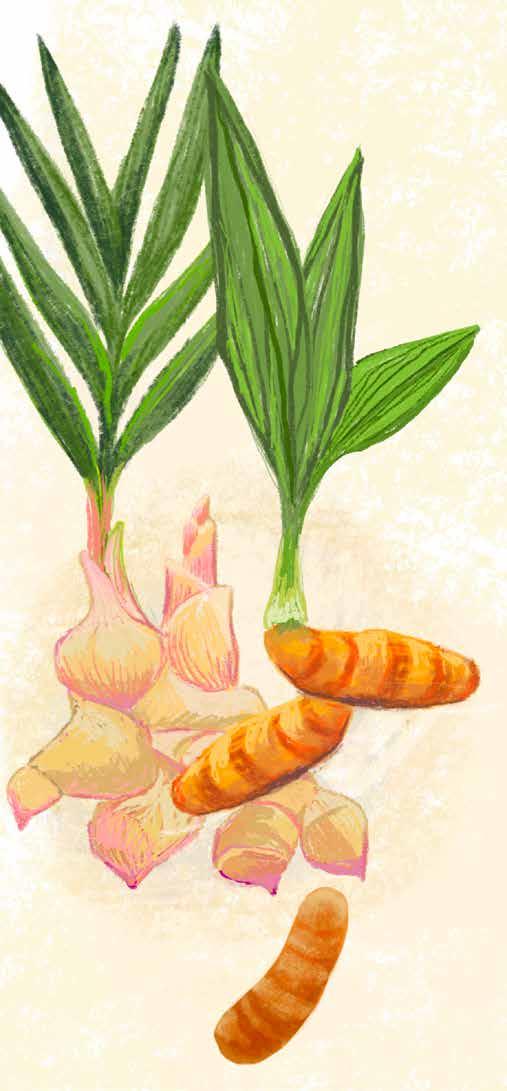
by Emily McCluhan
The revitalized riverfronts and main streets in Janesville and Beloit are alive with local artwork and lush green space. But it’s the eclectic eateries, casual breweries and unique shops filled with fresh and artisan goods that are pulling foodies from near and far. What’s driving this makeover?
“The biggest change is the number of locally owned dining options that source Janesville or Wisconsin ingredients,” says Susan Melton, marketing director for the Janesville Convention & Visitors Bureau and local foodie. She adds that areas like Janesville and Beloit had to do some soul-searching as they evolved from their industrial and manufacturing roots.
Savannah Schindler, public relations specialist with Visit Beloit and lifelong Beloit resident, attributes this evolution to a focus by community and business groups, both large and small. “We’ve had to focus on progress as a community and it’s allowed many unique restaurants and bars to find a home here.”
Embark on a gastronomic adventure with a delicious day trip to these emerging Wisconsin destinations. Here are a few of our favorite spots to add to your itinerary.

Start your day trip with a quick breakfast bite and a caffeine kick!
Nordskov Coffee at the Janesville Farmers Market
Danish for “northwoods,” Nordskov is owned by native midwesterners and coffee-roasting fanatics, Sheryl Rosa and Ryan Rouse. The line for their unique craft coffee drinks at the Janesville Farmers Market often stretches across the sidewalk. Try the Cold Fashioned, a play on the classic Wisconsin old-fashioned, with cold brew, oat milk and simple syrup made with orange, cherry and vanilla bitters.
Havana Coffee
1250 Milton Ave., Janesville
Away from the bustle of downtown, Havana Coffee hides behind a lush patio bursting with plants and flowers. Inside is a cozy space with fireplaces and nooks for gathering and enjoying a variety of Colectivo coffee, tea, boba tea, smoothies and made-from-scratch sandwiches and baked goods. The cranberry-orange scone is a morning must-have.
Bagels & More
324 State St., Beloit
With a rotating menu of quiche and seasonal soups, Bagels & More is the spot in Beloit for gathering with friends over breakfast or lunch. A variety of latte combinations and bagel flavors make each visit unique, and with a range of vegan, vegetarian and gluten-free options, there is something for everyone.
Spend the day pursuing the markets and shops, then bring a taste of your travels home with you.
Sprawling along the revitalized riverfront area of downtown Janesville known as Town Square, the farmers market runs every Saturday from May to October and offers everything from coffee, pastries, cut flowers and produce, to a Mexican taco truck featuring karaoke. With plenty of seating to take in the sculptural artwork over the pedestrian bridge that connects the two sides of the market, it’s a great way to spend a weekend morning.
When the pandemic hit in 2020, Joan and Richard Neeno saw an opportunity to use their passionate (and unemployed due to COVID-19) kitchen team from Lark Restaurant to add heat-and-eat meals to the diverse selection of locally sourced food and hard-to-find wine at Lark Market. In the post-pandemic era, you can still find to-go dishes and pizzas in their coolers, as well as great suggestions for charcuterie boards and wine pairings.
Lori Reyes never thought that her passion would be a combination of lilikoi (Hawaiian for “passion fruit”) and cheesecake, but after starting a small shop in Hawaii in 2015 offering that combo, she decided to bring the flavors back to her home state of Wisconsin. From her signature lilikoi cheesecake to a variety of macarons (look for the lavender lemon or peach cobbler), Reyes strives to bring the taste of the Big Island to Wisconsin.
Bushel & Peck’s
328 State St., Beloit
With locally sourced goods and handcrafted foods made from their own farm in Monroe, Bushel & Peck’s brings farmers and artisans directly to the Beloit community and beyond. Spice up snacks and dips with their range of hot sauces like Friendly Ghost or the popular Cherry Bomb; season soups and meats with their chili crisp oil; or bring brunch together with the Bloody Mary mix and pickles.

Relax with a happy hour sip and snack.
G5 Brewing Company
1895 Gateway Blvd., Beloit
Inspired by breweries visited by the five members of the Gunderson family (hence the G5) in Montana, G5 is a modern yet welcoming space. Brunch and elevated pizzas and burgers pair perfectly with “beermosas” and a wide craft beer selection. On a warm day, head to the beer garden with a crisp and refreshing Hindenburg In A Lightning Storm, a kölsch-style beer with a twist of Centennial hops.
Rock County Brewing Company
10 N. Parker Dr. Suite 160, Janesville
Built on a passion for homebrewing, Rock County Brewing Company opened in 2019 in the historic Carriage Works building in downtown Janesville, offering food, a beer garden and award-winning beers. Try a Prickleberry Sour with flavors of prickly pear and raspberries for a summer-into-fall vibe, or a Schwarzbier for something more roasty and chocolatey.


Paintings from artist Jeff Henriquez don the inside of Sandwich Bar creating the feeling of "stepping into a graphic novel" according to owners Joan and Richard Neeno.
Cap off your day with unique and chic eats.
Hill Winery
8220 N. John Paul Rd., Milton
Timber Hill Winery, owned by Amanda Stefl, a Janesville-area native and one of the youngest female winery owners and winemakers in the country, is nestled near the scenic Ice Age Trail. Behind the large front doors adorned with deer antlers is a bustling tasting bar. Sample from Timber Hill’s 40 wines, ranging from sweet and dry reds, to blush wines and specialty wines such as the spicy jalapeno. Or take a glass of the Marquette Rosé to the back deck overlooking the vineyard and pair it with a brick-oven pizza or cheese board for a perfect late summer snack.
Lark Restaurant
60 S. Main St., Janesville
One of Susan Melton’s favorite locales in Janesville is Lark Restaurant, owned by Joan and Richard Neeno. “There's always something to discover with Lark’s inventive menu of food, craft cocktails and wine,” she says. “Menu staples include a ciderbrined pork chop served with Brussels sprouts, sage, apple-cider pan sauce, and mac and cheese with fried chicken made with cavatappi, gouda cheese sauce, bacon-onion jam, fried chicken and pork rind crumble.”

Sandwich
The floor-to-ceiling murals of Anthony Bourdain and Julia Child inside Sandwich Bar pay homage to owners Joan and Richard Neeno’s love of all things food. Favorites on the menu include The Jolene, a country-fried chicken sandwich with pimento cheese, Alabama white sauce and lettuce. Or the Tommy Salami with fried bologna, salami, butterkäse cheese, pickled onion and mustard aioli. Be sure to indulge in the fries served with Parmesan aioli and a side of deviled eggs.
The self-described “Modern Italian” offerings at Velvet Buffalo include a rotating seasonal menu highlighting the best of local ingredients in spins on bruschetta and panna cotta. For something more classic, try the butter-poached lobster or a housemade pasta dish. The rooftop patio is a perfect spot for a glass of a bold red wine and city views.
Since 1955, Tilley’s has been a staple in Beloit for pizza and sandwiches. According to Savannah Schindler, once you’ve had a small square of Tilley’s Pizza House pizza, you’ll be hooked. “From the specialty homemade thin crust and pizza sauce to the wide selection of toppings, including sausage with fennel seeds, your mouth will be watering for your next trip to Tilley’s.”
F A r M / A r T
Experience agri/culture in Sauk County on the edge of the Driftless oc tobe r 5-14

Arr i vE C u ri ouS and meander through small towns, grazed pastures, country churchyards and productive farmland. You'll be amazed at the work of artists and the daily artistry of farmers. Catch a glimpse of the culture within agriculture.
TH ou SANDS travel from near and far to take part in this 50-mile, self-guided drive through Sauk County's scenic farmlands—punctuated by site-responsive artworks, roadside poetry, field notes, pasture performances, yummy food and more.
Be sure and yield to farmers, bikes and the odd buggy or two.

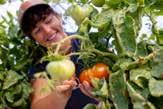
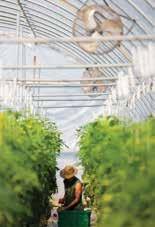











BY MARISSA DEGROOT
“I love the unexpectedness of it,” says Matt Trotter, referring to his pair of business ventures in the heart of a small Wisconsin city of just over 1,000 people.
Trotter is founder and owner of Parlor Hotel and Horseradish Kitchen + Market located in downtown Princeton, less than an hour-and-a-half drive north of Madison. The unexpected nature of his businesses are only the tip of the iceberg of what draws people to this tiny town.
Parlor Hotel is a seven-room inn that is anything but a quick place to crash before hitting the road. It is a space of belonging and becoming, a space to retreat and recharge. What Trotter, along with partner Greg Wright and business partner Alex Pearsall, have created in the 156-year-old, beautifully restored building is an immersive experience and retreat for creatives.
Uniquely designed rooms, like the Grant—dubbed the “best room in the house”—with its reading nook and soaking tub or the vibrantly colored Remi queen suite, can be individually reserved. For folks interested in a space to host a special celebration, company retreat or reunion, the whole inn is also available to rent. Bringing a group to the Parlor Hotel opens the opportunity for special dinner and breakfast options, opportunities not available to non-hotel guests, at Trotter’s other business venture, Horseradish Kitchen + Market.
A stay at the Parlor Hotel is a launching point to all Princeton has to offer, including the natural beauty of the Fox River that flows through the city, the largest outdoor flea market in the state, and a host of dining options including Horseradish Kitchen + Market. The restaurant, music venue and store is a one-minute walk across the street from the Parlor Hotel, open Friday through Monday.
Horseradish got its start as a food truck, serving up specialty sandwiches and salads out of a small school bus. In 2018, Trotter and Pearsall opened Horseradish Kitchen + Market in Trotter’s hometown, a place that four generations of his family have called home. “It’s been fun for me to see it [Princeton] through fresh eyes,” says Trotter. He and Wright, who both have backgrounds in the arts, have been crucial members of a growing community in Princeton that’s creating a culture of creativity, inclusion and connection—elements that can also be seen throughout the Horseradish menu.
Sandwiches are made with bread from neighboring Renards European Bakeshop and produce is from their friends at area farms, including Boerson Farm and Sandy Fox Farms, with florals grown just down the road at Sugarloaf Gardens. Gluten-free, vegetarian and vegan options abound. The food is not only delicious but also beautiful—just one of the many ways Trotter and his team show care to visitors.
Trotter likens his pair of businesses to a home. “If Horseradish is the kitchen, entertainment space, then Parlor is the living room and bedrooms—someplace cozy to go back to.” And like a home, Trotter and Wright hope visitors feel like family in the spaces they have created— spaces that foster inclusion, creativity and an appreciation of small-town Wisconsin.






Ginseng is no ordinary plant. The story of ginseng goes way beyond the health benefits and nutritional properties of a prized herb. In fact, it reads more like a drama filled with history, poaching, exploration and international trade—and it’s all happening here in our neck of the woods.
Ginseng is one of the oldest known herbs used for medicinal purposes, and its popularity continues today in Asia; this plant tends to carry some mysticism and folklore around it, as with many special herbs. The shape of the ginseng root has historically denoted special importance: those that most resemble the human form are considered most valuable, medicinally and monetarily. A quality root that has grown for many seasons looks somewhat like a human, with smaller roots shooting out like legs from the main root. Also used on this continent for centuries, the Mohawk word for ginseng, garantoquen means man’s image—whether this is parallel thinking or remnants of when the Bering Strait was closed and Asia and North America were one landmass (or something more mysterious) is hard to say, but one thing is for sure: ginseng of all types has long been prized the world over and deserves our attention, both for its medicinal value and to steward the plant for future generations.
members of the Cherokee, Iroquois, Delaware, Menominee, Potawatomi, Fox, Penobscot, Creek, Chippewa, Pawnee, Seneca and Sioux tribes (and there are likely more not as well known). There are reports of some of these groups using the leaf as well as the root in medicine, though not much is known of this practice today.
Though it is native to this area, American ginseng has been cultivated since the 1800s in the US and Canada, but wild ginseng has an even longer history of commerce. The export of ginseng from North America to Asia began in the early 1700s after Joseph Francois Lafiteau, a French priest living in Canada, found–after much searching–wild ginseng near his mission and began wild-harvesting alongside native residents, then began export to China
The main benefits of ginseng include energy, stamina, healing, libido and mental alertness.
Ginseng is a root renowned for its health-giving properties. Part of the ivy family Araliaceae, varieties of this plant can be found all over the world. Panax ginseng, also known as Asian ginseng, and Panax quinquefolius, or American ginseng, are the primary types used for herbal medicine. Their cousin, Siberian ginseng, also known as eleuthero, is also commonly used in some herbal traditions. Panax quinquefolius is the variety that grows in the eastern and midwestern United States, including much of Wisconsin. Though primarily used today in Asian countries, what is now known as American ginseng has been part of Indigenous American herbal practices for centuries, used by
within a few years. Today millions of pounds of ginseng are cultivated and harvested in Wisconsin and the rest of the US each year, the vast majority of which is still exported to China and other Asian countries. This powerful herb continues to be a mainstay in their herbal medicine practices, over 5,000 years since it became a staple in what is now known as Traditional Chinese Medicine (TCM).
Once you dive into the research on the health benefits of ginseng, it is easy to see why this herb is so highly sought after. The main benefits of ginseng include energy, stamina, healing, libido and mental alertness. Other, lesser-known benefits are myriad and include improved eyesight, fever reduction, headache relief, better sleep, blood sugar regulation, digestive support, detoxification, improved blood pressure and cholesterol, fertility and endurance.
Ginseng is what is known as an adaptogen, a class of herbs that supports overall well-being and the body’s ability to adapt to stressors. Adaptogens set themselves apart from other herbs as they are nonspecific, meaning they are intended to affect the entire body, supporting organs and systems that need balance and healing. This category of herbs, coined by Russian herbalists in the 1940s, are all nontoxic and non-habit forming and generally recognized as safe for long-term use. Other adaptogens include ashwagandha, schisandra, astragalus, rhodiola and licorice root. Similar categories of herbs are seen in other herbal medicine traditions, including Ayurveda (the ancient Indian healing practice), Native American herbal practices and Traditional Chinese Medicine. In TCM, Asian ginseng is considered “yang,” with warming, stimulating, energizing properties, while American ginseng is considered “yin,” with cooling, calming, and restorative properties. Medicinal uses of ginseng—typically using dried roots—include teas, capsules, tinctures and foods, where the roots are cooked into dishes like broths and congee, a long-cooked rice porridge. Ginseng is typically meant to be used as a tonic, where it is taken on a regular basis to help support balance, rather than acutely or “as needed.”
Wild ginseng is typically harvested in early to midfall, when the green leaves turn to gold, making them easy to spot in brushy areas that are still green. Plants can be found in forested areas of mixed hardwoods, especially those with steep hills and ravines. Mature plants typically have three or four leaves coming from a tall, thin stem with small, bright red seeds. Each leaf has five leaflets (quinquefolius means “five leaves'') that form a fan-like shape. The top three leaves are larger, with the bottom two leaves smaller; this leaf pattern is one of the main identifiers. Also important to look for are small, bright red seeds. The root must be
carefully dug up to avoid damaging it, and it is the law in Wisconsin that after the root is harvested, foragers must plant the seeds in the vicinity of the harvested root to help keep these plants growing for years to come.
Only plants that are many years old should be harvested, to protect the plant population and for a higher-quality root. Ginseng is a slow-growing plant that requires very specific growing conditions; it can take 1–2 years to begin to grow from seed and several more years to grow a root large enough to harvest, so extreme care must be taken when harvesting in the wild. The medicinal value of ginseng is said to improve as it grows older. Stem scars that grow each year tell the age of the plant, much like the rings on a tree. Some ginseng plants live for decades, 50–80 or more years, though these are rarer due to overharvesting.
A note on wild harvesting: As with all foraging, always start with proper plant identification by researching the plant thoroughly before harvesting or consuming. Find good foraging resources, such as books or talk to an expert in this field. You could also take a wildcrafting course or tag along with a friend who knows their plant ID well for more hands-on learning. And of course, always practice responsible, ethical foraging by only taking what you need and not overharvesting. If you are unsure of any of these things, do not attempt to harvest this plant.
Overharvesting of wild ginseng in Asia, nearly to the point of extinction for the plant, is how the export of American ginseng to China began all those years ago. American ginseng has met that same fate in many areas, including Canada where it was first harvested for export. Much has been done to ensure that American ginseng is no longer overharvested, including tight regulations on when and how much you can harvest. The Wisconsin DNR has a wild ginseng harvesting program to support sustainable harvesting practices and regulate the sale of wild ginseng into and out of Wisconsin. On private or public property, you need a license through the DNR to harvest wild ginseng, even for
A celebration of the ginseng industry is planned for September 21st in Wausau.
by Sara Maslar-Donar
Ginseng cultivation has deep roots in Wisconsin. For more than a century, ginseng farmers in the Badger State have been planting, harvesting and processing one of the world’s most sought-after crops. According to the Ginseng Board of Wisconsin, Wisconsin-grown ginseng is famous worldwide for its boldly bitter and aromatic qualities, and 98% of all U.S cultivated American Ginseng comes from Wisconsin.
“We are blessed to have this 125 years of tradition, making us the best known ginseng producer in the world. And that goes a long way,” says Dr. Ming Tao Jiang, a doctor and ginseng farmer in Marathon County.
Marathon County is the leading producer of U.S. ginseng, but not many people are aware that Wisconsin is at the forefront of superior product production.
But ginseng lovers haven’t been able to fully experience the festival in recent years. The COVID-19 pandemic and trade issues led organizers to postpone the event in 2020 and throw a scaled down event in 2022. They're planning the same change for this fall's festival, but despite the setbacks, organizers say the one-day event on Saturday, September 21 is sure to renew spirits amid the fallout. “We deserve to celebrate. The industry survived. Many didn't. But still we need to cheer up,” said Dr. Ming. “Things are looking up.”
From interactive farm visits where you get to dig your own root to sipping ginseng tea while chatting with some of the area’s cultivators, attendees will get their fill of the region’s “hidden secret.” Attendees will also be treated to a cultural celebration complete with performances from regional artists and community groups. Dr. Ming says he hopes

personal use. Separate licenses are needed for sales and for cultivated ginseng as well.
Wild American ginseng can be worth hundreds to thousands of dollars per pound, depending on the quality of the root. This price tag can get people seeing dollar signs, but not always thinking about the consequences of overharvesting or showing concern for where they harvest. Because of the demand in China for ginseng, the price of wild ginseng is extremely high. Wild ginseng is considered to have a higher medicinal value than farmed or woods-grown, where plants are cultivated in the woods to mimic ginseng’s natural habitat. As you might imagine, a wild plant this valuable can lead folks to do crazy things to try and cash in on this harvest, such as poaching (harvesting on someone else’s property) and theft. Poaching or otherwise illegally harvesting ginseng from someone else’s land can be a serious issue in this area, not only because of trespassing, but this practice often leads to overharvesting and disruption of natural habitats, as the only objective is to harvest ginseng for money; care for the land and the future of the plants are not taken into consideration.
Because of its popularity and value, ginseng has continued to be extremely over-harvested in Asia, and many are now turning to the US for American ginseng—though the same fate could be in store for this plant if we do not take good care of it in our area. Ginseng can be cultivated rather than foraged, which reduces the need for wild harvesting and may help support this plant for future generations, especially when done in the woods using organic growing practices. You can purchase seeds or roots to cultivate your own either in the woods or in a farm or garden field, with special care taken to replicate forest conditions, such as shade, temperature and soil pH. Ginseng farming is a growing industry in the US and Wisconsin in particular, with Wisconsin being the primary grower and exporter of cultivated ginseng in the country. There are several large ginseng farms in the state, most of which are in the Wausau area. Notably, Hsu’s Ginseng in Wausau was started by the first Chinese ginseng grower in the US and has been operating for over 40 years. Wisconsin-grown ginseng is especially sought after in the American ginseng market, which is good news for Wisconsin growers.
Makes 3 quarts
Prep time: 15-20 minutes
Cook time: 24 hours
Herbs do not just have to be used in tinctures and capsules—they have a place in food as well. One traditional way to consume herbs is to simmer them with bones to make a nutritious, collagen-rich broth. This broth supports immune function and overall vitality, with the help of American ginseng and other herbs. Feel free to add or omit herbs that suit your body’s needs and what you have on hand. This can be sipped like a savory tea, used to make a nourishing soup or used in place of water to cook rice or vegetables.
2–3 pounds cartilage-rich bones (chicken carcass, soup bones, beef knuckle bones, neck bones, oxtail—the bones can be from any animal)
1 medium dried wild or Wisconsin-grown American ginseng root, whole or sliced (a similar amount of ashwagandha root may be used instead)
3–4 slices dried astragalus root slices
¼ cup dried rose hips or goji berries
1 sheet kombu seaweed
1 bulb garlic, peeled
1 medium onion, diced

2 tablespoons fresh ginger, sliced ½ cup dried shiitake mushrooms (about 6)
2 tablespoons raw apple cider vinegar
1 teaspoon sea salt, or to taste
Optional ingredients for nutrients and flavor: star anise pods, cinnamon sticks, dried licorice root, peppercorns, reishi mushroom slices, codonopsis root, dried nettles, burdock root, dandelion root, thyme, rosemary, sage and parsley
1. Place all the ingredients in a slow cooker and cover with water, starting with about 4 quarts of filtered water, depending on the size of your vessel.
2. Set the heat to low and let it simmer for 12 to 24 hours. (I typically cook beef or lamb longer than chicken, as the bones are larger.)
3. If you like a clearer broth, you may skim the top after it has been cook ing for a few hours to clarify it.
4. Once the broth is finished, strain out the solids and serve right away or transfer to glass storage containers and chill until ready to use. It may be frozen for later use as well.

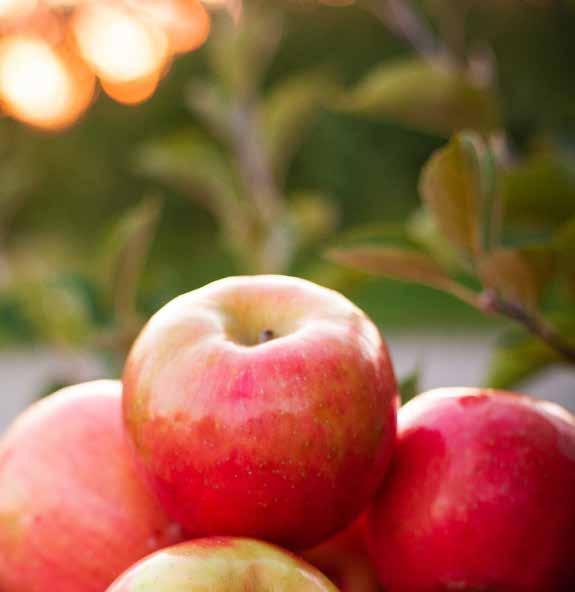
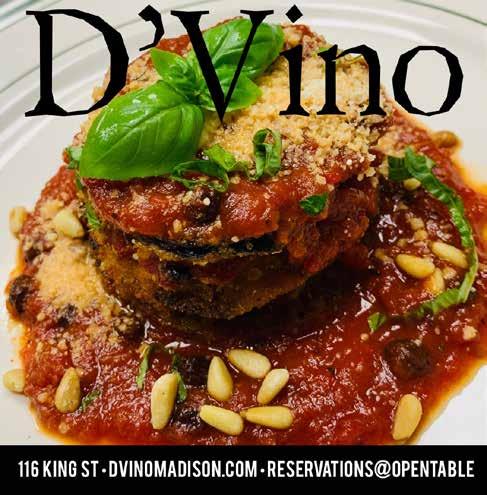



You already eat farm-to-table. Why not imbibe locally too? Try these Wisconsin beverage makers for some of the most creative refreshments around.
Since 1994, Madison’s Original Brewpub has served up award-winning craft beers alongside local and global pub fare. They feature a rotation of classic European varieties, modern styles, and caskconditioned ales. Find six-packs of your favorite Dane recipes at local retailers and all pub locations.
GREATDANEPUB.COM
@greatdanepub /greatdanedowntown
Featuring Scotch Ale and Oktoberfest
Stop in to the Grumpy Troll in Mount Horeb to try one of their 12 rotating, handcrafted microbrews made onsite. Their taproom is the perfect place to gather with friends and family or host any event! Be sure to try one of their delicious smokehouse offerings from their award-winning pitmaster.
THEGRUMPYTROLL.COM
@grumpytrollbrew /grumpytrollbrew
Featuring Sunflower Ale

Bailey’s Run Winery is open 7 days a week. Neapolitan pizzas and live music every weekend! “WhereWineGoestoHaveFun!”
BAILEYSRUNVINEYARD.COM
@baileysrunvineyardandwinery /baileysrunvineyard
Featuring Rebel Faith red wine
Family-owned boutique winery located on the doorstep of Devil’s Lake State Park. Stop in for wine, food, beer and music.
BALANCEDROCKWINERY.COM @balancedrockwinery /balancedrockwinery
Featuring Anastasia cabernet sauvignon
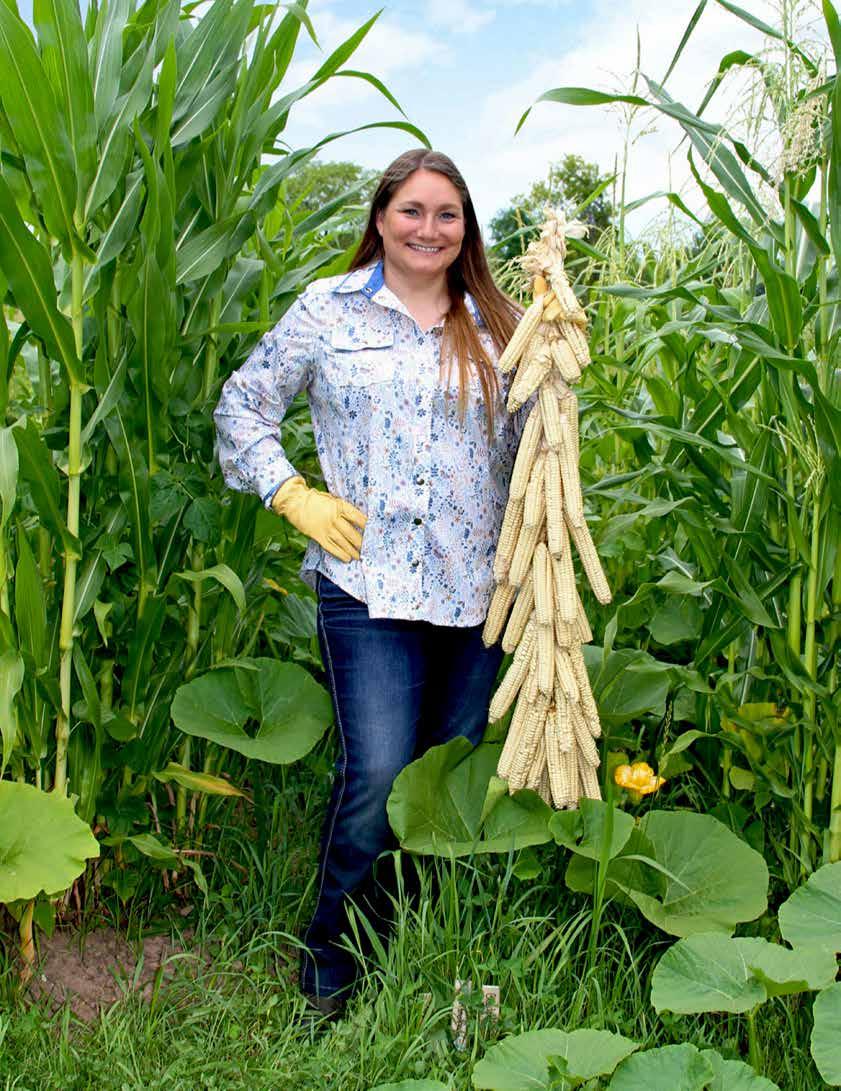
UKWAKHWA IN ONEIDA COUNTY FOSTERS A SPACE TO CELEBRATE INDIGENOUS FARMING
Just a short two-hour drive from Madison is Ukwakhwa in De Pere, a 10-acre farm and community space devoted to sharing the traditions and methods of Indigenous farming practices. What started as a small garden at Rebecca and Steve Webster’s home has turned into a hub of activity with an event space, pond, orchard, gardens, native tree planting areas and a trading post, where folks can come to trade for food, baskets, books, blankets, hides and other Indigenous crafts.
As Oneida Nation Tribe members, the pair always had an interest in gaining more knowledge of Oneida culture and history, but it wasn’t until 2015 when they grew their first crop of heirloom corn that they saw the opportunity to first learn, then pass on that knowledge to others. The garden only kept expanding from there to growing beans and squash.
This led Rebecca Webster, who serves as the executive director of Ukwakhwa (pronounced oong-gwa-kwa), to suggest finding land that would allow them to do more work in the community.
“I said ‘Hey Steve, what do you think about looking for some land to expand our gardens and do more of our community work, selling our house, building a new one and how about you quit your job and homeschool our daughters?’” Rebecca says.
He agreed and the rest is history.
When looking for land, the Websters talked to an Oneida faithkeeper who ultimately gave them the name Ukwakhwa: Tsinu Niyukwayay^thoslu, which means “Our foods: Where we plant things.”
Since that moment they’ve been working to create an educational hub in De Pere for those in the Oneida Nation and beyond. Walking through Ukwakhwa, you will see more than a traditional farm.
“We wanted to create a safe space for the community to come and learn about our seeds, our foods, taking care of gardens, harvesting, food preparation and making the traditional tools and crafts that go along with caring for our foods,” Rebecca says.
While 10 acres may seem like a lot of land, Rebecca says in reality, they grow on a small scale so there’s a larger focus on distributing traditional, heirloom seeds. The sharing of seeds started back when Rebecca had her own small garden and continues at Ukwakhwa.
“We consider seeds to be like our relatives,” she says. “The ones that our people have historically cared for are the ones that I’m interested in, and we grow those varieties out.”
In May, Ukwakhwa gave away 30,000 heirloom seeds in under 40 minutes during the annual Oneida Nation Seed Giveaway. As they are not able to supply a food pantry or food boxes with limited growing space, Rebecca says seeds allow people to grow the crops themselves.
A large focus of Ukwakhwa is the traditional three sisters crops: corn, beans and squash. Rebecca says many people have the misconception that these come from Europe, but all are indigenous to the Americas.


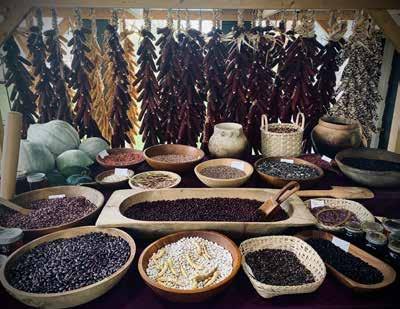


“We
wanted to create a safe space for the community to come and learn about our seeds, our foods, taking care of gardens, harvesting, food preparation and making the traditional tools and crafts that go along with caring for our foods.”
—REBECCA WEBSTER


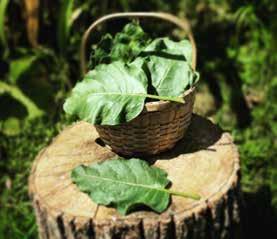





“Generations of our family have cared for these particular varieties,” Rebecca says. “Our seeds have been spreading and moving and traveling from communities since time immemorial.”
In Indigenous farming, Rebecca says typically the three sisters grow in mounds where each crop helps foster a miniature ecosystem that supports the other two crops.
Corn serves as the base, growing strong for the beans to climb. The beans then provide nitrogen to the soil while the squash surrounds the mounds. With big leaves, the squash keeps the soil moist and the weeds down, and its prickly stems and leaves keep animals from wandering into the mounds.
“It’s like a community where we each have our different strengths and we rely on each other to be able to be the best that we can be,” Rebecca says.
Initially there was a steep learning curve for Rebecca and Steve as neither had a background in farming—Rebecca is a professor at the University of Minnesota Duluth—and unfortunately there wasn’t collective knowledge available as easily within Oneida Nation.
To build Ukwakhwa, the two had to search for information by asking people in their Wisconsin community and by reaching out to Oneida Nation members who still live on their ancestors’ homelands in present-day New York.
During summer’s peak growing season, the Websters host tours and classes at Ukwakhwa for the Oneida Nation community and visitors who want to understand what goes into growing and using Indigenous foods, including tools and crafts that are made to cultivate foods. Some past events include classes on how to process corn using the traditional corn pounders method, how to make corn-husk flowers and dolls and how to bake cornbread on coals.
Ukwakhwa is currently converting the main garden into raised beds to be wheelchair accessible and the Websters hope to create an even larger outdoor cooking space.
“Our goal is to turn around and share that [Oneida] knowledge with our community and our extended community so that it’s not so hard for other people to find that information,” Rebecca says.
To find out about events and the best time to visit, visit Ukwakhwa’s Facebook page.
Clockwise from top left:
A variety of heirloom seeds which Ukwakhwa gives away during their annual Oneida Nation Seed Giveaway.
Construction on the farmstead kitchen at Ukwakhwa was completed in early 2022.
Rebecca Webster holds packages of Tuscarora White Corn processed in their farmstead kitchen.
Sunflowers and corn dry in the sunroom.
Preparing to plant beans in the high tunnel.
Storage corn lines the shelves at Rebecca and Steve's home.
Freshly picked tobacco leaves.
Rebecca picks squash blossoms.
by Anna Thompson
When that wanderlust hits this fall why not satisfy your craving for adventure by making your next dining experience into a destination? Whether it’s a quick scenic jaunt or a road trip-worthy trek across the Mississippi, Wisconsin’s oldest restaurant or a modern piano bar, there is something on this unique list for everyone. And whichever path you choose, the journey’s end is guaranteed to be delicious.
A unique farm-to-fork eatery in a small-town setting, the Branding Iron Roadhouse serves Angus beef they raise themselves alongside other locally produced ingredients. With burgers, sandwiches, wood-fired pizza and, of course, a Friday night fish fry, there’s something for everyone. On the second Thursday of the month, check out the local talent at their original works open mic night. Enjoy a community atmosphere at this unique country roadhouse deep in the Driftless, complete with a stunning, scenic drive to get you there.
BRANDINGIRONRH.COM


Grab a brandy old-fashioned and settle in for a fresh take on supper club classics at Wisconsin’s oldest restaurant. Nestled in the remarkable landscape of Nashotah, Red Circle Inn combines the perfect measure of nostalgia with ambiance, top-notch service and thoughtfully crafted dishes. This historic restaurant also features their acclaimed Sunday Suppers, a chance for guests to gather and enjoy supper, family-style, where no one leaves hungry or without a story to tell. With its storied past and exquisite present, the dining experience at Red Circle Inn is a journey worth taking.
REDCIRCLEINN.COM
This close-to-home gem is a lovingly restored 1888 dairy listed on the National Register of Historic Places, reimagined as a restaurant, cafe, and boutique hotel highlighting the growers and artisans of the Sugar River Valley. Order a salad or sandwich from the charming Dairy Cafe, or enjoy an elevated burger, pasta or steak from The Kitchen paired with a selection from their thoughtfully curated beer, wine and spirit collection. With features like Old-Fashioned Friday, weekend Jazz Brunch, and monthly seasonal soft-serve flavors (think strawberry rhubarb and toasted coconut), you won’t want to miss a trip to this enchanting destination.
SEVENACREDAIRYCO.COM
Set in downtown Oconomowoc in charmingly scenic lake country, this family-owned restaurant focuses on approachable fine dining with an emphasis on locally sourced ingredients and from-scratch fare. Sobie’s farm-to-table menu feels both comfortingly familiar yet enticingly new with offerings like Friday fish fry and broasted chicken alongside Quebecois poutines and brown butter scallop risotto. Relax with a local craft brew, a selection from their extensive wine list, or a handcrafted cocktail and enjoy the community feel of this sophisticated yet unpretentious gathering place.
SOBIESRESTAURANT.COM
Take a winding journey along the Wisconsin River until you meet the Mississippi and you will find Prairie du Chien, a historic Driftless community, and The Drake Piano Bar. This elegant yet relaxed eatery showcases a locally sourced and innovatively presented menu. Try The Omnivore or The Undone Nacho “food flight,” or go for something gluten-free like the The Friday Night flight. Visiting for brunch? The Breakfast Club food flight serves up various delectable breakfast favorites. Pair these inventive spreads with a handcrafted cocktail and enjoy an on-site rotating exhibition of local fine art and year-round live music.
THEDRAKEPDC.COM
Ready to take your next dining experience a little farther afield? Try a picturesque road trip to the world-renowned Toppling Goliath Brewery in the beautiful Driftless area of Decorah, Iowa. Not only does Toppling Goliath feature 25+ taps featuring IPAs, stouts, sours, and Bavarian-style beers, they also serve delicious food that pairs wonderfully with their incredible beer selection. Relax in the taproom or on the patio with a salmon BLT, Goliath burger or ribeye tacos with sweet Thai chili sauce. When you’re done visiting the taproom, explore the waterfalls, hiking, biking and camping that surrounding Decorah has to offer.
TGBREWS.COM






BY LAUREN RUDERSDORF

There’s something endlessly comforting about a big bowl of noodles on a crisp fall day, and, luckily for us, there are a lot of excellent chefs around Madison who are experts in how to craft the perfect bowl of noodles. The following chefs highlight dishes from a few distinct noodle regions—Italy, China and Southeast Asia—playing with flavors local to Wisconsin in the fall. From simple yet elegant sauces (like butternut squash sugo and kale pesto) to homemade noodles (like dandan noodles and crescent-shaped homemade ravioli) and stir-fried bowls packed full of fall veggies, there is something to tempt every home cook.
Kale becomes abundant in the fall and one of Jon Rosnow's favorite things to do with it before the season ends is make pesto. This pesto is very versatile and can be used in a variety of meals. It also freezes really well if you want to scale up that part of the recipe. Rosnow most enjoys the pesto stirred into pasta with a good cheese. (His favorite local one is Landmark Creamery’s Pecora Nocciola. It’s salty, nutty and grates beautifully into this dish.)
Serves 4
Prep time: 20 minutes
Cook time: 30 minutes
For Pesto:
3 garlic cloves
¾ cup toasted almonds
1 teaspoon salt
½ teaspoon red pepper flakes, optional
1 bunch kale (lacinato or curly), about 5-6 leaves, ribs and stems removed
1 lemon, juiced
½ cup Pecora Nocciola from Landmark Creamery (or Parmesan), plus more to finish
¼ cup extra virgin olive oil
For Pasta:
1 sweet potato, peeled and diced small
1½ teaspoons plus 3 tablespoons salt, divided
2 teaspoons olive oil
16 ounces dried rigatoni noodles
2 tablespoons unsalted butter

Recipe by Jon Rosnow of Common Pasta

1. Preheat the oven to 350 degrees F.
2. Place the garlic, almonds and salt (and pepper flakes, if using) into a food processor. Pulse until finely chopped, scraping down the sides as needed. Slowly add the kale and continue to blend until the kale is broken down. Add the lemon juice and cheese, and blend until smooth. Scrape down the sides of the food processor once again and then, with the food processor running, slowly pour in the olive oil.
3. On a baking sheet, toss the diced sweet potato with 1½ teaspoons salt and olive oil. Roast them in the oven until tender, about 15-18 minutes.
4. Fill a large kettle or stock pot ⅔-full with water and add remaining 3 tablespoons of salt and bring to a boil. Place the rigatoni in the boiling water. Cook the noodles until al dente, about 10-12 minutes. Drain the cooked noodles, reserving 1 cup of the pasta water.
5. Place ½ cup of the reserved pasta water back into the large pot, stir in the pesto. Turn the heat to medium. Add the cooked pasta and roasted sweet potatoes and gently toss until hot. Stir in the butter until fully melted and incorporated into the sauce. Add more pasta water and cheese if desired. Place into serving bowls and garnish with freshly grated cheese.
Stephanie and her sister Jacqueline opened Little Palace together in January 2022, bringing fun American Chinese food flavors and dishes to downtown Madison. Late last year, they briefly closed Little Palace as they transitioned into becoming second-generation owners of their aunt’s beloved restaurant Ha Long Bay. With that resume, it’s safe to say, Stephanie and Jacqueline know good noodles. This dish brings tons of fall flavor into a dish of sautéed egg noodles and a sweet and salty sauce.
Serves 4–6
Prep time: 15 minutes
Cook time: 45 minutes
For Quick Pickled Onions:
½ cup water
½ cup white vinegar
1 tablespoon sugar
1 teaspoon salt
1 white onion, sliced
For Mì Xào:
2 cups delicata squash, seeded and diced (about 1 squash)
1–2 cups broccoli crowns, cut into bite-size pieces
2 tablespoons plus 1 teaspoon neutral cooking oil, divided
½ teaspoon salt, plus more to taste
8 ounces egg noodles
2 garlic cloves, minced
1 cup sliced cabbage
½ cup julienned carrot
2 tablespoons oyster sauce
2 tablespoons soy sauce
2 teaspoons sugar
2 scallions, thinly sliced
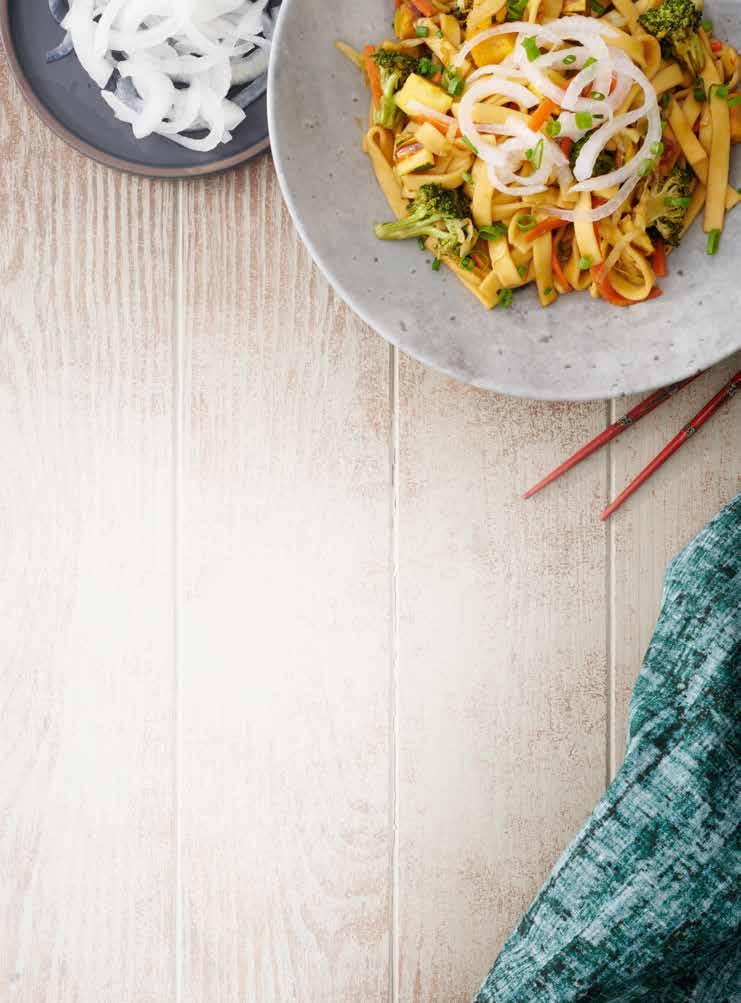
RECIPE NOTE The recipe for quick pickled onions makes about 2 cups. You will only need ½ cup for this dish so reserve the rest for another use. They’re great on salads, sandwiches and tacos.

1. Preheat the oven to 350 degrees F.
2. To make the quick pickled onions, combine the water, vinegar, sugar and salt in a small saucepan. Warm over medium heat until the sugar and salt are dissolved. Let cool and pour it over onions in a small jar or bowl. Set aside the pickled onions to accompany the stir-fried noodles.
3. To make the mì xào, toss the squash and broccoli with 1 tablespoon oil and ¼ teaspoon salt. Roast the vegetables in the preheated oven for 15 minutes.
4. Cook the egg noodles according to package directions. Rinse the cooked noodles with cold water to stop the cooking process, and toss them with 1 teaspoon of oil to prevent sticking.
5. In a medium-sized hot pan, pour in the remaining tablespoon of oil. Sauté the garlic until aromatic, about 1-2 minutes. Add the cabbage and carrot to the pan and sauté until wilted, about 3 minutes.
6. Add the roasted veggies, noodles, oyster sauce, soy sauce and sugar to the pan with sautéed cabbage and carrots. Sauté until all the ingredients are incorporated and heated thoroughly. Taste and adjust seasonings as desired, adding more sugar and salt if you like.
7. Serve warm with the scallions and drained pickled onions. You can refrigerate any extra pickled onions in an airtight container for up to one week.
The magic ingredient here is Josey Chu's own Sambal Nyonya: a deep red paste made from chili peppers, onions, tamarind, vinegar, sugar and molasses for a rich, complex heat. The flavors combine beautifully with the last fall tomatoes and tender bok choy. Chu has been crafting her own Southeast Asian sauces under the Madame Chu label since 2017. It’s available at Metcalfe’s Market, Willy Street Co-op, Viroqua Co-op and Chu’s website, but if you can’t find it, gochujang, hoisin sauce or harissa paste could all work in a pinch.
Serves 4
Prep time: 15 minutes
Cook time: 20 minutes
1½ tablespoons Madame Chu’s Sambal Nyonya (see note above), or more to taste
2 tablespoons tamari sauce
½ teaspoon salt
¼ cup water
8 ounces yellow egg noodles or wide rice noodles
8 tablespoons olive oil
½ medium red onion, diced
5 garlic cloves, minced
2 cups thinly shredded bok choy
2 medium-sized tomatoes, cut into 8–12 wedges
¼ cup finely chopped cilantro
1 green onion, thinly sliced
1. In a bowl, mix Sambal Nyonya, tamari sauce, salt and water.
2. Bring a pot of water to a boil and cook noodles according to package directions. Drain, rinse under cold water and set aside.
3. In a deep-sided pan or wok, turn the heat to medium high. When the pan starts to smoke a little, lower the heat and add the olive oil. Add the red onion and garlic and fry until they are light brown. Add the bok choy, and stir fry for 1-2 minutes. Finally, add the tomatoes and noodles and stir fry for 1-2 minutes.


4. Pour the sauce mixture over the noodles and sauté until coated. Place the noodles on a large serving dish and garnish with green onion and cilantro.
This beet-filled half-moon shaped ravioli, known as casunziei, was a favorite of Francesco Mangano's when he traveled across northern Italy. His own recipe celebrates fall with a beautiful filling mixture made from beets, ricotta and breadcrumbs. It makes a lot because when entering into the world of stuffed pasta, it’s worth the effort to just keep going. Ravioli freezes well if you’re not serving a crowd. Just lay them out on a floured baking sheet, freeze until firm and then store in sealed freezer bags.
Serves 8
Prep time: 1 hour
Cook time: 15 minutes
INGREDIENTS
For Pasta:
2⅓ cups all-purpose flour, plus more to store the ravioli
1¼ cup semolina flour
5 eggs
½ teaspoon salt
For Filling:
1 pound red beets, roasted and peeled
1¼ cup ricotta cheese
¼ cup plain breadcrumbs
½ teaspoon salt
¼ teaspoon black pepper
A pinch of nutmeg
For Sauce:
1 cup butter
¼ teaspoon poppy seeds
8–12 sage leaves
1 cup finely shredded grana, Parmesan, or other grated cheese

1. To make the pasta, in a large mixing bowl, mix the all-purpose flour, semolina flour, eggs and salt until they come together. Remove the dough from the bowl and knead it by hand until the pasta dough is smooth and all the flour is hydrated, about two minutes. Wrap the pasta dough in plastic and let it rest for 10–15 minutes.
2. While the dough rests, make the filling. Cut the roasted beets into large pieces and place in a food processor or blender. Add the ricotta cheese, breadcrumbs, salt, pepper and nutmeg. Puree until smooth. Set aside.
3. Working in batches, roll your pasta dough into sheets. (This is simplest with the help of a pasta maker set to the thinnest setting.) With a ravioli cutter, cut rounds of pasta dough, top with a small amount of filling, wet the edges with water, then fold your ravioli over. It should look like a halfmoon. Continue making ravioli until you’ve used all the dough and filling. You should have about 70–75 ravioli.
4. To cook the casunziei, bring a pot of salted water to a boil. Drop in your ravioli and cook for 4 minutes. Drain.
5. For the sauce, heat the butter in a large pan until it turns light brown. Add the poppy seeds, sage leaves and cooked ravioli. Sauté until coated, 1–2 minutes, and then finish with the grated cheese.

Sugo is a dish frequently on the menu at Mint Mark where Sean Pharr plays with flavors (and vegetables) to make complex-tasting dishes from simple ingredients. Most commonly, sugo refers to a traditional Italian tomato sauce, but here he combines browned butter, garlic and butternut squash to create a creamy, elegant sauce that is the perfect coating for long, thin noodles.
Serves 4–6
Prep time: 10 minutes
Cook time: 50 minutes
2 tablespoons butter
3 garlic cloves, smashed
½ yellow onion, diced
3 cups peeled and cubed butternut squash
1 cup sherry or madeira wine
2 teaspoon kosher salt, plus more to taste
1 pound spaghetti or bucatini
1 teaspoon sherry vinegar
¼ cup feta cheese
1 bunch chives, minced
1 stick cinnamon, finely grated
DIRECTIONS
1. In a large sauté pan, melt the butter over medium heat. Once the butter has melted, add the garlic. Continue cooking, foaming the butter and caramelizing the garlic until the butter is browned. Scrape the bottom as you go to ensure the butter browns, but does not burn. Once the garlic is deeply caramelized, add the onion and cook until opaque, about 2 minutes.
2. Add the squash, wine, and salt. Cover and reduce heat to simmer until the squash is tender, about 25 minutes, stirring occasionally.
3. Puree the squash mixture in a blender or food processor until smooth.
4. Bring a large pot of salted water to a boil. Add the pasta and cook according to package until al dente. Drain the pasta, reserving a cup of the pasta water.
5. Add the pasta to the sauté pan with the squash puree and a little bit of the pasta water. Stir over low heat until the pasta is coated, adding more pasta water as needed to create a nice sauce. Season with sherry. Taste and add more salt as desired.
6. To serve, plate and top with crumbled feta, chive and a pinch of cinnamon.
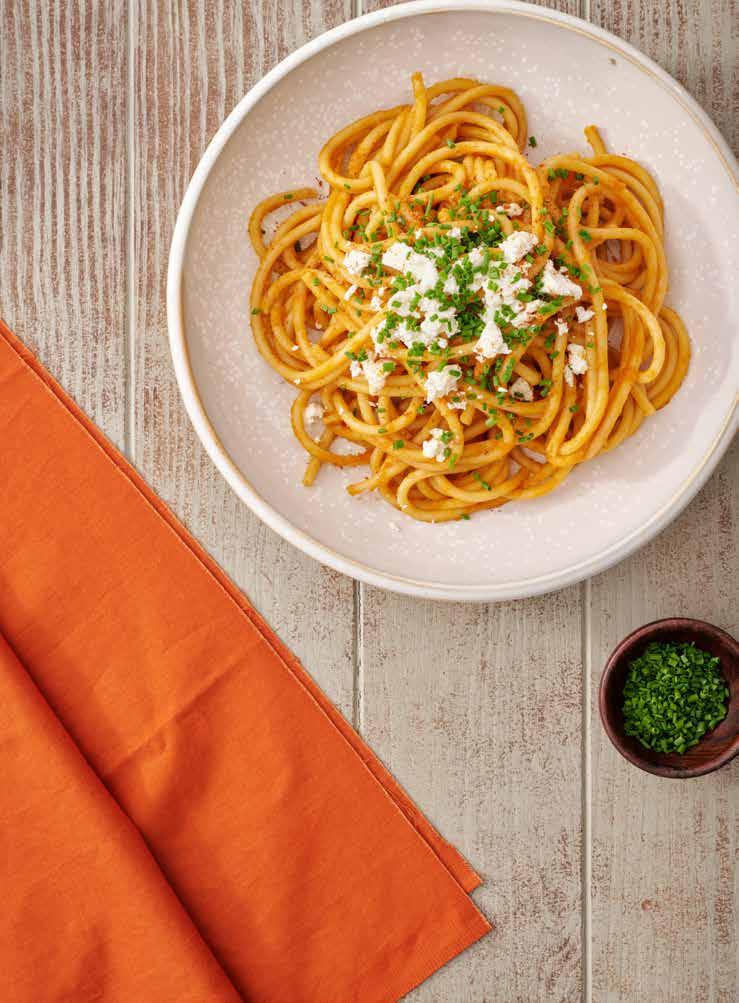

Dandan noodles have long been a staple on the menu at Taigu where they serve dandan made with pork, beef, chicken, tofu or eggplant. Hong Gau believes the soul of this dish lies in the sauce, and that’s what makes it so delicious. She believes the sauce tastes best with fresh noodles, which is what they make at her Middleton restaurant. However, not everyone has the time to make noodles from scratch, no matter how delicious. In that case, Hong suggests substituting lo mein, spaghetti or ramen as alternatives.
Serves 4
Prep time: 45 minutes
Cook time: 20 minutes
For Sauce:
1 tablespoon sesame oil
3 tablespoons vegetable oil
2 tablespoons grated ginger
6 cloves garlic, minced
1 pound ground pork
3 tablespoons cooking wine
1 tablespoon salt
2 tablespoons sugar
1 tablespoon black pepper
3 tablespoons soy sauce
2 tablespoons Shanxi black vinegar (or rice wine vinegar)
2 tablespoons chili powder
2 scallions, chopped
3 tablespoons ya cai (crushed preserved vegetable) or your favorite kimchi (optional)
½ cup shredded carrots
2 tablespoon crushed peanuts


1. To make fresh noodles, see instructions on the next page.
2. To make the sauce, in a wok (or cast iron pan), heat the sesame and vegetable oils over medium heat. Add the ginger and garlic, and sauté until fragrant. Add the ground pork along with the cooking wine, salt, sugar, black pepper, soy sauce and vinegar. Simmer until the pork is browned, about 10 minutes. Then add the chili powder, scallions and ya cai. Turn off the heat and thoroughly mix them into the pork.
3. If you're using homemade noodles, bring a pot of water to a boil and add the noodles. Cook until the noodles float to the top. Drain the noodles in cold water and put them into the wok with the pork and sauce.
4. Stir in the shredded carrots. Taste and adjust seasonings as desired by adding more black vinegar and/or soy sauce. Place in bowls and top with crushed peanuts.
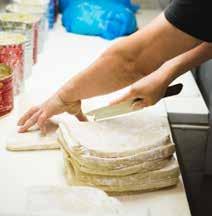


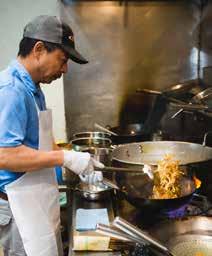

The handmade noodles steal the show at Hong Gau's Middleton restaurant, Taigu. Her Chinese noodles have a short list of ingredients (only flour and water) but carry a long history from the Shanxi region of northern China where Hong is from. The Taigu menu is filled with dishes from both the Shanxi and Canton regions, with options for eaters of all kinds.
5 cups all-purpose flour 1 cup water
1. To make the noodles, mix together the flour and water, and knead it into a dough until smooth. Cover the dough with plastic wrap and set it aside for 30 minutes.
2. Split the dough into six pieces and roll each section into circles, approximately 10–12 inches in diameter. Use a knife to cut the dough into even strips ¼-inch thick or your preferred noodle thickness.

Top: Sheets of handmade noodles are cut at Taigu.
Middle: Fresh noodles are made by the Taigu team and accompany many of the dishes at the Middleton restaurant.
Bottom: The Taigu dandan noodles are tossed in a wok and finished with chopped peanuts.
by
Recipes by Sarah Clemens of Noble Rind
Delicious Wisconsin-made cheeses transport you across the globe in these two simple yet stunning dishes. Roth Grand Cru® and Gouda make this French onion soup irresistible on a chilly fall evening, and the bacon-wrapped dates stuffed with Roth Buttermilk Blue® make a perfect appetizer for fall and winter entertaining.
Serves 4
Prep Time: 15 minutes
Cook Time: 25 minutes
INGREDIENTS
12 large medjool dates, pitted
6 slices bacon, halved crosswise
4 ounces crumbled Roth Buttermilk Blue®
DIRECTIONS
1. Preheat the oven 400 degrees F. Place 12 toothpicks in a small bowl filled with water and let soak for 15 minutes. Line a baking sheet with parchment paper and fit with a wire rack; set aside.
2. Halve dates lengthwise being careful not to cut all the way through.
3. Place a small amount of cheese, about a ½ a tablespoon or less depending on the size of the date, in the center of each date.
4. Wrap a piece of bacon around each date. Secure bacon with a toothpick. Place the dates on the prepared baking sheet.
5. Bake until the bacon is cooked through, about 20 to 25 minutes.
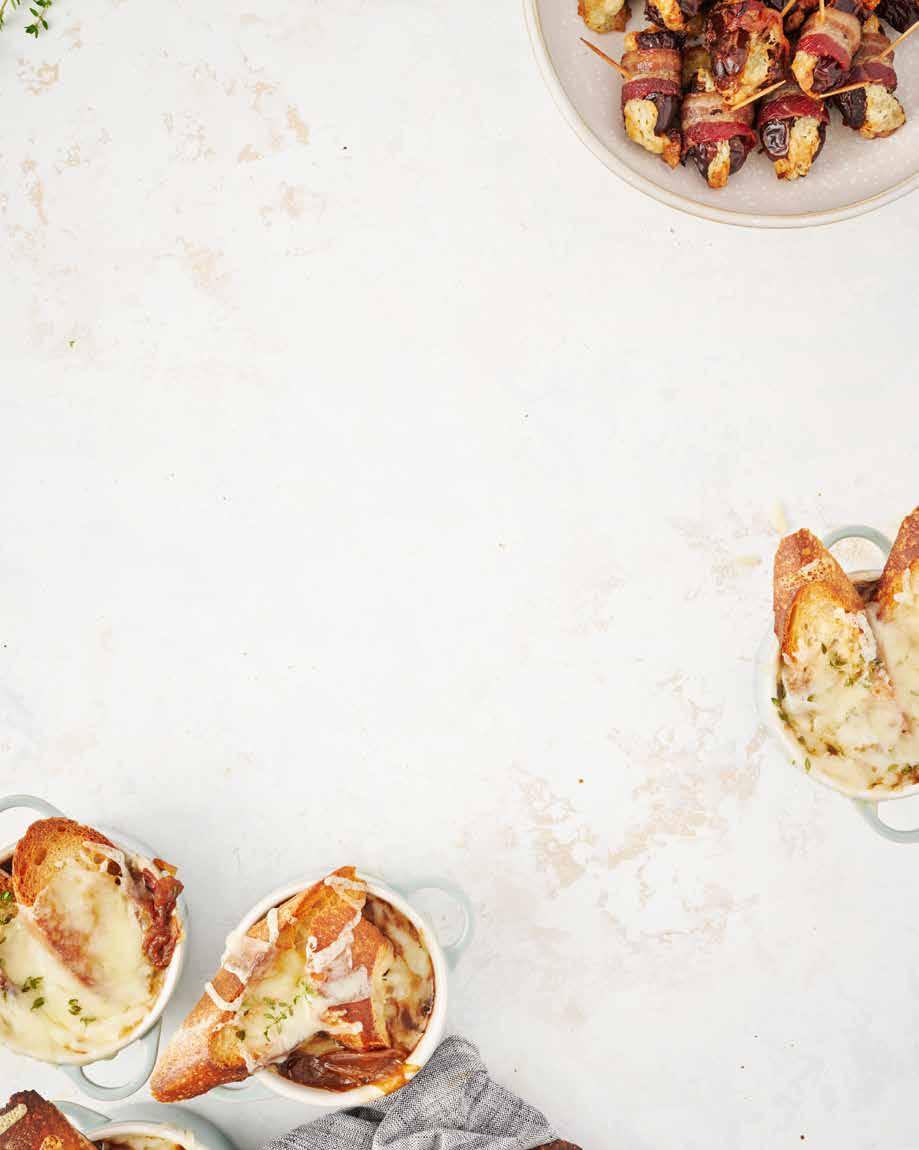
Serves 4
Prep Time: 20 minutes
Cook Time: 1 hour 35 minutes
INGREDIENTS
4 tablespoons unsalted butter, cubed
1 tablespoon extra-virgin olive oil
2 pounds yellow onions, cut in half lengthwise and sliced ¼-inch thick
1 teaspoon sugar
1 tablespoon all-purpose flour
½ cup dry sherry (optional)
3½ cups beef stock
2 teaspoons chopped fresh thyme
1 teaspoon coarse salt, or to taste
¼ teaspoon freshly ground black pepper, or to taste
8 (3/4 inch) slices French baguette, toasted
6 oz Roth Grand Cru®, shredded
6 oz Roth Gouda, shredded
DIRECTIONS
1. Melt butter and olive oil in a large Dutch oven or heavy pot over medium heat. Add the onions and spread them in a thin layer. Then sprinkle them with sugar. Cook, stirring as needed to keep the onions from sticking, until they are soft, golden brown and beginning to caramelize, about 1 hour.
2. Sprinkle the flour over the onions, and stir to coat. Add the sherry, stock, and thyme, and bring to a simmer. Cook, partially covered, for about 30 minutes, to allow the flavors to combine. Season with salt and pepper.
3. Ladle 1 cup hot soup into four ovenproof bowls. Arrange bowls on a rimmed baking sheet. Place 2 slices of toasted baguette over each bowl of soup to cover the surface of the soup completely. Sprinkle 3 ounces grated cheese over bread in each bowl.
4. Place under broiler until cheese is melted and browning around the edges. FIND ROTH CHEESE AT ROTHCHEESE.COM/WHERE-TO-BUY

by Rachel Werner
Road-trip cuisine can be bare bones in terms of sustenance and presentation. But being on the go does not negate having nutrient-dense nosh—or an Insta-worthy foodie moment. Fresh wraps stuffed with fall veggies such as bell peppers, carrots and sweet potatoes are a satisfying snack that can be consumed on the move, as well as easily photographed along the trails at Devil’s Lake, post-meander through a local corn maze or en route to Lambeau Field.
I prefer using a cruciferous vegetable leaf, like collard greens, that tend to hold a wrap together better while in transit rather than a tortilla or rice paper. Collard greens are gluten-free, plant-based, nut-free and soy-free—making it a stellar option if any traveling companions have dietary restrictions. They are also loaded with calcium, fiber and an array of antioxidants so each crunchy bite contains a nutritious boost. Plus this meal can be periodically revamped by switching up how the fillings are seasoned.
Collard green wraps can be prepped before heading out on the next autumn adventure then refrigerated prior to departure. For longer journeys, these wraps can be a part of a BYO variety “snack pack” to help avoid taste bud boredom or persuing the chip aisle at every gas station stop.

Serves 2
Prep time: 15 minutes
Cook time: 35 minutes
2 collard green leaves
1 small or medium sweet potato
2 teaspoons sesame oil
1 teaspoon pink sea salt
1 teaspoon ground black pepper
¼ cup sprouts or shredded cabbage
¼ cup bell pepper, diced
¼ cups shredded (or diced) carrots
¼ cup cucumber, chopped or cut in thin, lengthwise strips
½ an avocado, cubed (optional)
DIRECTIONS
1. Preheat the oven to 400 degrees F.
2. Wash and peel the sweet potato, then slice it into rounds about ¼-inch thick. Place the rounds in a single layer on a baking sheet and lightly coat them with sesame oil, salt and pepper. Bake for 25–30 minutes, turning over halfway through the cook time.
3. Place collard greens in a large pan with an inch of water. Cover and steam the greens over medium heat until wilted, about 2 minutes. Remove the greens from heat, drain the water and set the softened leaves aside.
4. Divide all prepped ingredients into two portions before beginning to assemble the wraps.
5. To assemble a wrap, fill a collard green leaf starting with the roasted sweet potato, followed by carrots, bell pepper, cucumber, sprouts (or cabbage) and avocado (if using). Be careful not to overfill. This will help to prevent tearing the leaf.
6. If desired, add 1–2 tablespoons of sriracha, chutney, peanut sauce, tahini or another condiment of your choosing.
7. Fold in the long sides of the leaf first. Then fold over the edge of the leaf closest to you. Keep rolling to fully seal the wrap. Repeat with the second leaf.
Note: This recipe mainly uses raw produce, but try subbing in pickled cucumbers, sautéed cabbage or tahini-roasted carrots to alter the flavor and texture.
Food is big business, and corporations make huge profits from our necessity for nourishment. While there used to be independent grocery stores in almost every neighborhood, people now spend their food dollars at big box stores and delivery services that send profits to corporate headquarters, states and even countries away. There is a different way to buy groceries, a way that keeps your food dollars circulating in your community, uplifts local producers and encourages practices that are good for the environment. If you want to make a difference in your community, love fresh and local food, and support small-scale, traceable food systems - shop at your local food co-op!
Food co-ops are rooted in the communities they serve. They are owned by the people who shop in the store and democratically controlled by a member-elected board of directors. Food co-ops are more than just places to buy groceries; they are community-centered organizations that build local
by Jen McCoy, Viroqua Food Co+op
economies, run programs that support local nonprofits, practice democratic and socially responsible business, and provide equitable access to fresh food that nourishes their communities.
Co-ops have roots dating back to the Industrial Revolution. To compete with large factories and maintain the rights of individual workers, in 1844 a group of weavers in Rochdale, England set out to form a new, just and equitable business model. In doing so, they created the basis for these seven unifying principles that all cooperatives operate under today:
• Voluntary and Open Membership
• Democratic Member Control
• Member Economic Participation
• Autonomy & Independence
• Education, Training & Information
• Cooperation Among Cooperative
• Concern for Community
The cooperative principles create a business structure that is fundamentally different from the corporations that value profit before people and the needs of the stakeholders before the communities that support them. From the very start, co-ops practiced equity and valued inclusion, allowing any person to join and giving each member one vote, including members of previously excluded communities. What started in Rochdale, England has grown into a powerful global, respected and effective business model that spans all industries, including utility and communication companies, credit unions, farmer's co-ops, worker’s co-ops, food co-ops and more!
This Co-op Month, shop at your local food co-op, where every purchase works to strengthen your community, support the local economy and grow the cooperative movement. While food co-ops are community-owned, you don’t have to be a member to shop, they are open to everyone.
LA CROSSE, WI AND ROCHESTER, MN • EST. 1973 • PFC.COOP
2 stores • 12,300 owners • $20.9 million in annual sales
29% of sales are local products (local = within 200 miles of each location)
MADISON, WI & MIDDLETON, WI • EST. 1974 • WILLYSTREET.COOP
3 stores and 1 stand-alone community space • 34,000 owners
$65 million in annual sales • Approximately one-third of the products sold are local (local = within 150 miles of the Wisconsin State Capitol building or anywhere in the state of WI)
VIROQUA, WI • EST. 1995 • VIROQUAFOOD.COOP
1 store • 4,800 owners • $11.1 million in annual sales 30% of sales are local products (local = within 100 miles of their store)




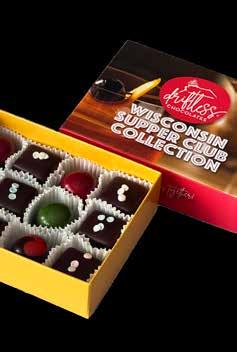






by Tera Johnson


The Great Lakes have always influenced the food we eat in Wisconsin. Historically, we think of fish from Lake Michigan and Superior–lake trout, white fish, smoked chubs. We also think about fruit picked from orchards in places like Door County and Bayfield. Proximity to the Great Lakes moderates temperature changes inland in the spring and fall, and the disparity in temperature between the land and the water in the summer creates wind. Both moderating temperatures and wind create ideal conditions for growing fruit. Now that climate change is making fruit growing more difficult, proximity to the Great Lakes is becoming more important to our orchards than ever.
Ed and Peggy Callahan started Dream Apple Farm in Port Washington in 2012 when they retired from careers as medical doctors, and they bring a scientific approach to the challenge of growing organic apples. They purchased their land near the shore of Lake Michigan in 2021, specifically because they anticipated more climate variability in the future. That year, Wisconsin orchards lost 75% of their crop to an unusually warm spring that produced enough “degree days” for the trees to bloom early, then they froze. On the Callahan’s farm, the trees typically bloom two weeks later than the rest of the
state because of the lake, and this helps protect their trees from early blooms that freeze.
According to Ed, “Climate change affects every stage of our growing cycle.” In spring, in addition to frozen blossoms, decreases in pollinator populations are creating problems with pollination. While we hear about the problems facing commercial honeybees, a larger problem is the decrease in the populations of native pollinators. “Honeybees are wimps,” says Ed. “They don’t tolerate wind anywhere near as well as native pollinators.” Climate variability is putting pressure on native pollinator populations through pollinator mismatch, where variable weather is causing plants to bloom before the pollinators arrive. This means trees don’t get pollinated and pollinator populations don’t have enough food.
In the summer, an orchardist’s biggest enemy is fungal infections that are exacerbated by humidity. As temperatures rise and the air holds more moisture, this is expected to cause more problems for orchards. Again, proximity to the cooling effect and air flow from the lake helps the Callahan’s orchard. They use high-density planting to improve airflow in the orchard. An increasingly common technique in modern orchards, high-density trees
grow on trellises. They’re trimmed into eight foot high boxes in rows that allow air to circulate. This also facilitates mechanical harvesting, spraying and irrigation. Organic orchards cannot use fungicides, so Ed uses natural treatments to keep the trees and apples healthy.
Late summer and early fall, apple orchards are particularly vulnerable to storms with high winds and hail. Even if the trees are not damaged, hail can damage apples and make them unsalable. Anticipating more storms like this in the future, large commercial orchards are starting to install huge netting systems so they can cover their trees during hail storms, but doing this over many acres is a very expensive proposition, particularly for small orchards like Dream Apple Farm.
Even in winter, climate variability can affect apple trees. Apple trees are meant to cold harden—gradually get used to colder temperatures—before it gets really chilly. When fall is long and warm, then winter comes precipitously, the trees may not have hardened properly and may not withstand the sudden drop in temperature.
So how are orchards in Wisconsin surviving as our climate introduces so many variables into growing
fruit? Wisconsin has 1,208 apple farms, according to the 2022 USDA Agriculture Census. Of these, only about 300 are commercial scale. 50% of apples consumed in the US come from China, 8% are raised domestically, with 1% from Wisconsin, according to Pam Jahnke in her 2016 Mid-West Farm Report, The Apple Industry in Wisconsin. Most commercial apple production in the US has moved to eastern Washington state where a dry and moderate climate makes growing apples easier.
Many apple orchards in Wisconsin are shifting to using new growing techniques and new apple varieties. Apple breeding is a primitive thing. It takes two parents to make a new apple tree—they never cross with themselves. To produce more trees, you must graft, which is taking a branch from one tree and attaching it to the root stock from another. Apples are best suited for growing in northern climates, which is why you don’t see them in the south. As the climate warms, it would be helpful to have more tree propagation that supports varieties that are more resilient and can grow in warmer climates. “Researchers are studying a number of genetic traits in fruit crops that could be bred to create varieties

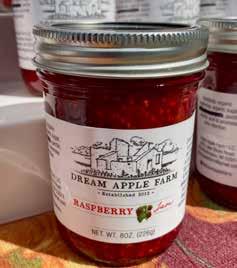
that are less likely to lose cold hardiness as quickly,” says Amaya Atucha, the UW-Extension fruit crop specialist. Scientists are also exploring traits that would delay bud break, increase drought resilience and reduce heat stress. Absent the arrival of new vari eties, orchardists like the Callahans are moving away from monoculture and planting multiple varieties of apples with different growing characteristics, which makes it possible for some varieties to perform well when others may not.
They are also embracing agrotourism. Ed and Peggy opened their store, DreamPort Harvest Market, in downtown Port Washington so they could sell the organic apples they grow with help from Lake Michigan. Now the store also features a range of organic and local produce, fresh food from their kitchen and pastries. When you visit the DreamPort Harvest Market, you’ll be supporting a local, organic orchard and be able to experience the huge variety of colors and flavors that come from their 24 different apples with names like Wolf River and Brown Snout. You’ll also be able to support other area organic farmers who are working with nature to bring food to our tables.






When you're thinking of going out to explore a new place to eat or meet friends for drinks please consider these generous sponsors.

A woman-owned natural winery in the heart of the Driftless region. Wines are available at our tasting room, or to ship nationwide.
802 Ridge Street, Mineral Point AMERICANWINEPROJECT.COM

Forage Kitchen crafts specialty salads, hearty grain bowls, and soups crammed with mouth-watering, wholesome, local ingredients that keep you happy and satisfied all day long.
Locations Across Madison EATFORAGE.COM

A country roadhouse serving burgers made from locally-grown beef and other local fare. The Friday night fish fry, wood-fired pizza nights and smoked rib nights are not to be missed!
132 S. Main St, Lime Ridge BRANDINGIRONRH.COM

A spacious lounge offering cocktails, brunch, local brews, upscale bar fare (including vegan and gluten free options), and regular live music inside the historic Garver Feed Mill five days a week.
3241 Garver Green, Madison GARVEREVENTS.COM/LOUNGE

A cozy, upbeat spot to grab delicious, ethically sourced coffee and other specialty drinks. Thoughtfully developed breakfast and lunch menus highlight local goods.

A neighborhood bar and bistro with great cocktails, 22 draft lines, and a seasonally inspired menu. Join us for Happy Hour Monday-Friday!

A one-of-a-kind bakery specializing in handcrafted, all-butter croissant creations available at their storefront as well as the Dane County and Northside farmers’ markets.
1924 Fordem Ave, Madison FARBRETONBAKERY.COM

We’re an independent, woman-owned and operated, certified organic craft brewery. We brew big, flavorful organic beers that make a positive impact on our community and the environment.
931 E. Main St, Ste 9, Madison GIANTJONES.COM



Bringing the flavors of the Southwest to the Midwest with time-honored recipes. Madison’s favorite margarita! Gathering with friends for over thirty-five years.
destination
206




We would not exist without the support of the businesses and organizations that advertise in our pages. This support allows us to pay writers, designers, photographers, print and distribute this issue and make this a free publication for readers to pick up throughout southwestern Wisconsin.
Please support the following businesses to experience the best local, seasonal and sustainable products and services in the region.
If you enjoy this publication and want to support our work, please consider subscribing. An added bonus: you won't miss an issue. Subscribe at ediblemadison.com
Thank you!
GROCERY STORES & FARMERS' MARKETS
CATHRYN’S MARKET AND ROCKWELL RIDGE FARM cathrynsmarket.com
PEOPLE’S FOOD CO-OP pfc.coop
VIROQUA FOOD CO+OP viroquafood.coop
WILLY STREET CO-OP willystreet.coop
LIFESTYLE & KITCHEN
GOOD DAY SHOP gooddayshop.net
SIFT & WINNOW siftandwinnow.com
WISCONSIN CUTLERY & KITCHEN SUPPLY wisconsincutlery.com
HEALTH & WELLNESS
KINDLED COMMUNITY SAUNA kindledcommunitysauna.com
TOURISM & EVENTS
EAT LOCAL
COOKING CHALLENGE ediblemadison.com/events
HILL & VALLEY EXPLORATION TOUR explorehillandvalley.com
INN AT CEDAR CROSSING // CEDAR CROSSING RESTAURANT & BAR innatcedarcrossing.com
IRON AMETHYST INN & THE 2ONE SPEAKEASY ironamethyst.com
JUSTIN TRAILS RESORT justintrails.com
LATARNIA GUEST HOUSE latarniaguesthouse.com
MOUNT HOREB AREA
CHAMBER OF COMMERCE trollway.com
PARLOR HOTEL parlorhotel.com
TALIESIN taliesinpreservation.org
TOBACCO WAREHOUSE INN tobaccowarehouseinn.com
VISIT SHEBOYGAN visitsheboygan.com
WORMFARM INSTITUTE wormfarminstitute.org
FARMS & FOOD GOODS
1913 KICKAPOO ORCHARD 1913kickapoo.com
COX HILL FARM coxhillfarm.com
DOUDLAH FARMS doudlahfarms.com
DRIFTLESS CHOCOLATES driftlesschocolates.com
HIDDEN SPRINGS CREAMERY hiddenspringscreamery.com
HONESTLY CRANBERRY honestlycranberry.com
LANDMARK CREAMERY landmarkcreamery.com
MEADOWLARK FARM & COMMUNITY MILL meadowlarkorganics.com
RIEMER FAMILY FARM riemerfamilyfarm.com
ROTH CHEESE rothcheese.com
VITRUVIAN FARMS vitruvianfarms.com
FOOD & BEVERAGES
AMERICAN WINE PROJECT americanwineproject.com
BAILEY’S RUN VINEYARD baileysrunvineyard.com
BALANCED ROCK balancedrockwinery.com
BRANDING IRON ROADHOUSE brandingironrh.com
THE COOPERS TAVERN thecooperstavern.com
DANCING GOAT DISTILLERY dancinggoat.com
DRAKE PIANO BAR thedrakepdc.com
D’VINO dvinomadison.com
FAR BRETON BAKERY farbretonbakery.com
FARM HEARTH & BISTRO farmhearthbistro.com
FORAGE KITCHEN eatforage.com
GARVER LOUNGE garverevents.com/lounge
GIANT JONES giantjones.com
GREAT DANE PUB & BREWING COMPANY greatdanepub.com
THE GRUMPY TROLL thegrumpytroll.com
HOMECOMING homecomingspringgreen.com
HORSERADISH KITCHEN & MARKET horseradishkitchen.com
ISLAND ORCHARD CIDER islandorchardcider.com
J. HENRY & SONS jhenryandsons.com
LET’S SHINE COFFEE letsshinecoffee.com
LOMBARDINO’S lombardinos.com
LONGTABLE BEER CAFE longtablebeercafe.com
MADISON SOURDOUGH madisonsourdough.com
ONE & ONLY oneandonlywi.com
PASQUAL’S CANTINA pasqualscantina.com
PASTURE & PLENTY | P&P MAKESHOP pastureandplenty.com
RED CIRCLE INN redcircleinn.com
REUNION reunionspringgreen.com
SEVEN ACRE DAIRY sevenacredairyco.com
SOBIE’S RESTAURANT sobiesrestaurant.com
TIPSY COW tipsycowmadison.com
TOPPLING GOLIATH tgbrews.com
WONDERSTATE COFFEE wonderstatecoffee.com


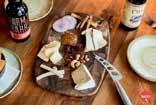











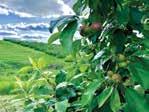









BY MARISSA DEGROOT

When you are new parents and also foodies, sometimes culinary adventures land you a little closer to home. This evening, Noelle and Ada Adedoyin, known on Instagram as the @friendlyblackfoodies, venture out with baby Simon to enjoy a dinner of gemelli pasta with pesto and fresh focaccia from the Common Pasta food cart in Madison. The couple document the delicious bites and sips they discover near and far, whether it’s a brat at the Memorial Union Terrace or mango pancakes in Oahu. Their epicurean exploits are on display for all to drool over.
